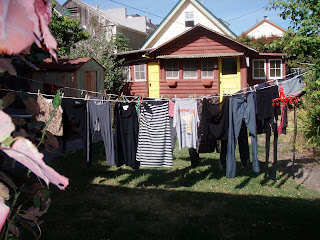Before we can tackle on world issues of sustainability I believe it is important to start with oneself first and what I mean by that is personal sustainability. Personal sustainability is just that, personal, so the lifestyle changes you chose to make must be right for you and only you can decide what those are. Once you've made these changes then it's easier to advocate for and implement substantial sustainable choices that apply to the world. For me, I believe that my body is a temple so I've bowed to make personal changes that will stimulate my mind, body, and soul. For this reason I have chosen to become vegetarian, do yoga, meditate amongst nature, and follow a stricter exercise regimen.
Vegetarianism is a very personal choice that actually require some research behind it in order to do it in a healthy way (for more in this,check out my post on vegetarianism). It's been going really well so far, i've had a lot of fun discovering new vegetarian meals I would never have thought of trying otherwise. Since becoming vegetarian, i've found myself making wiser food choices as well and I feel a lot more energized and healthy. I think that I'm gonna keep at it even after I'm done with this sustainable living class.
I've always liked doing yoga but have never actually set out time in my schedule for it, usually I would fit it in if I found some extra time. Actually dedicating time for yoga actually makes me a less stressed out so that I can use it to take a break and then continue on with the rest of my tasks for the day. I know a couple moves but I've mostly been using NetFlix yoga videos to get a well rounded session.
Yoga is a log impact form of exercise, mainly focusing on the mind body connection rather than a heavy fat burning work out, so to balance things out I've been trying to commit to a stricter exercise regimen. It's probably been the hardest of my changes to keep up since there's been such gloomy rainy weather most of this quarter which makes it so much less appealing to go to the gym 3 or 4 times a week, especially since I live off campus. However, I still make sure to keep an active lifestyle to balance out the times when I'm feeling unmotivated about spending hours at the gym. I walk everywhere and take nice bike rides around Santa Cruz whenever possible and that's not just a benefit to my body, it's a benefit to my mind as well. Nothing feels better than being alive and being able to enjoy the nature the world has to offer.
That brings me to meditation! Anytime I'm feeling overwhelmed I turn to nature. Being outside reminds me that there is so much more out there, so much beauty and adventure to discover that that worry about that Stats test or project that's due isn't the most important thing in the world. I don't want to waste my life away feeling stressed out about the little things, not that I'll completely disregard all my responsibilities to sit out under a tree basking in the sunlight (as much as I would LOVE to) but I think taking that time off to do it can bring you back to a more level headed mindset. And I'm not just blabbing about hippy dippy stuff, it actually does make a difference. Mind, body, and soul, you must be good to all elements of your being and for me, simply being able to walk outside and take sometime off to look around, feel, and listen to the world around me nourishes all elements of my being.


